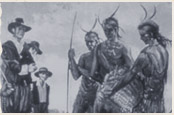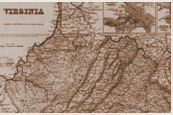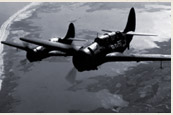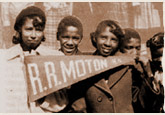The Anti-imperialism Debate: McKinley as Imperial Despot
Ohio State University: William McKinley in Political Cartoons
The Anti-imperialism Debate: The Imperialist Stunt
Ohio State University: William McKinley in Political Cartoons
The Anti-imperialism Debate: Republicanism Down to Date
Ohio State University: William McKinley in Political Cartoons
The Anti-imperialism Debate: The American Policy
University of Hawai'i Kapi'olani Community College Library: Political Caricatures of the Hawaiian Kingdom, 1875-1905
Description: These grouped resources are political cartoons from the period of McKinley's presidency, referencing his decision to annex the Philippines and Hawaii. This decision provoked a sharp anti-imperialist reaction among much of the American intelligentsia and the American media. These cartoons provide students with the opportunity to explore the debate within the United States over the appropriateness of colonial acquisitions.
Teaching Tips:
"Do Now" Suggestion
- "Is He to be a Despot?" (1) This cartoon would be ideally suited for starting a lesson. Students could be shown the cartoon and asked to respond in their journals to what they feel the cartoon is representing. Students could also express their opinions, as to whether they agree with the cartoon's sentiment. This cartoon (2) could be used as suggested in the description of "McKinley as Imperial Despot," above: students could write their own interpretation and opinion about what the cartoon is depicting. Students could also view the cartoon to begin class, and select any one character or image from the cartoon, and describe its significance. The teacher might wish to encourage students to include their opinion about the validity of the cartoonist's interpretation, with support for their opinion. Students could view the cartoon (3) at the start of class, and write their own interpretation of the scene. The teacher might wish to aid student interpretation of the scene by asking a guiding question, like "What does this scene suggest about Hannah's influence on American foreign policy during the McKinley administration?" Students could view this cartoon (4) along with "Republicanism down to Date(above)." Students could make a Venn Diagram comparing and contrasting the images included and their characteristics, and thee message each cartoon is delivering. Students could then write their responses in paragraph form. Students could share their responses with the class. As with the other cartoons described above, students could write a short interpretation of the cartoon's meaning, and their opinion as to the validity of that interpretation.
- After discussing the cartoon's (1) meaning, perhaps as suggested above in the "Do Now' activity, students could design their own cartoon, expressing the relationship between the Phillipines and the U.S. from the U.S perspective, or from the Spanish point of view. Students could then share and discuss their work with the class. As suggested in the description of "McKinley as Imperial Despot," students could create their own cartoon depicting the relationship between America and the Philippines, from a perspective different from that portrayed in the cartoon (2). Suggestions would be from a pro-American or pro-Spanish perspective. Students could make a chart comparing this cartoon with "McKinley as Imperial Despot." Categories of comparison could include depiction of McKinley, the United States, the Philippines, the Filipino people, and other symbols in the cartoon. Students could then write a paragraph, summarizing their chart comparison, and share their analysis with the class. Students could create a chart, as described in Teacher tips for "The Imperialist Stunt," comparing depictions in this cartoon (3) with those shown in "The Imperialist Stunt" and/or "McKinley as Imperialist Despot." Students could create their own cartoon from a different perspective- a Republican perspective justifying their foreign policy, or mocking more pacifistic views- as a response to the portrayal in The Verdict's cartoon. Both "The Battery of Imperialism" and "Republicanism down to Date" were drawn by Horace Taylor, cartoonist for The Verdict, a political paper that offered pro-Democrat perspectives. Students could read more about The Verdict at http://www.history.ohio-state.edu/projects/uscartoons/verdict/ After analyzing the Taylor cartoons (4), students could draw a third cartoon which might have appeared in The Verdict. Students could also write an editorial supporting The Verdict's perspective. Alternatively, students could create an article or cartoon supporting the Republican perspective.



